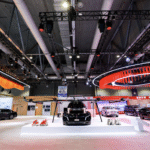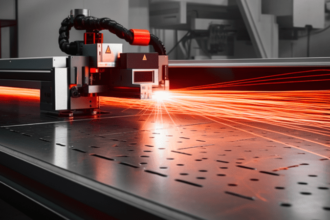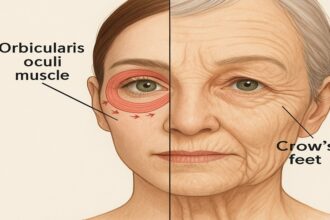Collision repair service is indispensable to restore the car’s condition. From assessing car damage to removing it, this ensures your vehicle is ready to get around like before. The reputable smashrepairperth.net.au uses a wide assortment of tools to revive the look of your car, from basic hand tools to high-end machinery. This article will help you learn the fundamental tools in the car collision industry based on their function and use.
Professional Tools in the Car Collision Industry
Here is a comprehensive list of high-end tools from basic to advanced, commonly used in the collision industry, especially breakdown for you.
Pliers
The mechanics use the pliers for gripping, cutting, and twisting. Whether it’s about using needle-nose pliers or channel lock pliers, choosing the right pair ensures efficiency and quality in collision repair work. Even though the multiple sizes and adjustable jaws let technicians do wonders on your car.
Disc Grinder
The disc grinder is used for sanding and helps make the metal look new again. It is also helpful in eliminating the surface rust and existing coatings without causing damage to the base metal. The technicians also use the disc grinder to prepare the vehicle surface for smooth painting.
HVLP Spray Gun
The HVLP spray gun is commonly used to paint any vehicle, including a car, truck, or SUV. It’s a high-volume low pressure spray gun. This gun can paint the overall vehicle surface within a fraction of the time. The technicians can apply multiple coats on the vehicle efficiently because the HVLP spray gun comes with a cup that contains primer, paint, and a clear coat.
Hammers and Dollies
Hammers and dollies play a crucial role in removing the dents and dings to reshape the metal surface. These nasty spots require upward pressure to come back to their original shape. The basic set includes double-ending dollies, heels, and wedges, along with a wide range of hammers.
Wrenches
Wrenches are the standard tool in auto maintenance work. The technician twists and turns the wrenches to effortlessly tighten or loosen the minor to major nuts and bolts of the vehicle. The different types of wrenches include combination, miniature, torque, open-end, stubby, double box-end, and ratcheting to remove and adjust the car components.
Light
While repairing cars, some dark spots or crevices need perfect lighting. The mechanics use the flashlight or headlamp to repair the car from underneath. They always buy flashlights that have a hook to hang them in the right position for easy vehicle repair work. To increase visibility, the mechanics use a lamp with a clear plastic lens or any red or blue filters.
Screw Drivers
Screwdrivers are another mainstay in collision repair work. This tool comes in flattened, cross, and star shapes to get fixed into the head of the screw so that the mechanic can easily turn it. The different screwdriver mechanics commonly used include Flathead, Phillips, Pozidriv, Torx, Hex, Robertson, Tri-Wing, and Spanner.
Ratchets
The mechanics use the ratchets for tightening or loosening the nuts and bolts in the hard-to-reach areas. The availability of a socket on one side and its reversible mechanism helps in disassembling and reassembling your vehicle while doing structural repairs. These small, medium, and large ratchets help technicians speed up the repair process, maintaining efficiency.
Sockets
These socket tools come with a plastic or metal socket-shaped cup that provides a secure fit over bolts and nuts. The mechanics pair the sockets with wrenches or ratchets while dealing with complex car components to ensure efficiency in every collision repair work. The bit and impact sockets are the most common.
Electric and Pneumatic Sanders
In collision repair work, the technicians use electric and pneumatic sanders to restore the vehicle surfaces. These two tools are used for both light to moderate tasks, like smoothing fillers or preparing the vehicle panels for painting. The mechanics perform well in the car refinishing services with electric and pneumatic sanders.
Welding Equipment
The welding equipment plays a major role in collision repair work, including panel replacement or any structural repairs. The different types of welders found in repair shops are MIG, TIG, Stud, Spot, Plastic, and Aluminium. The expert technicians use the welding equipment to repair vehicles based on their manufacturing requirements.
Scan Tools
These days, vehicles are equipped with advanced electronics. That’s why mechanics use scan tools in car collision maintenance work. The experts read the error codes and easily find the diagnostic issues to repair them.
Pulling Tools
The mechanics use slide hammers and anchor pulls to restore the damaged vehicle surface. These pulling tools help remove the dents and dings to reshape the metal of the vehicle. The technician uses the pulling tool over the surface and applies force to pull out the metal.
Conclusion!
The basic to advanced tools used in the collision repair work reflect the complexity and nobility of the repair tasks. Every tool plays a significant role in restoring the pristine condition of the vehicle with no further damage. As technology continues to evolve, the list of essential tools will also evolve, and technicians should have the know-how to use them. It is mandatory to choose an experienced auto repair shop to restore the car’s look using the top-notch tools listed above. Take your time, do your research, and choose the right repair service—your car’s optimal performance and safety depend on it.

















